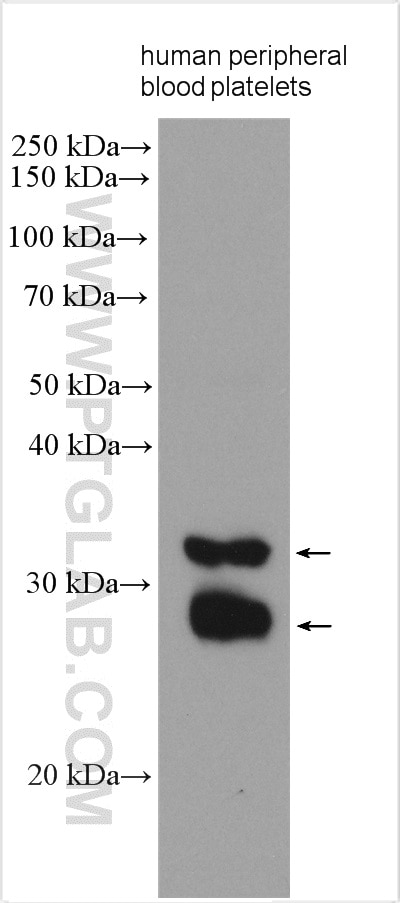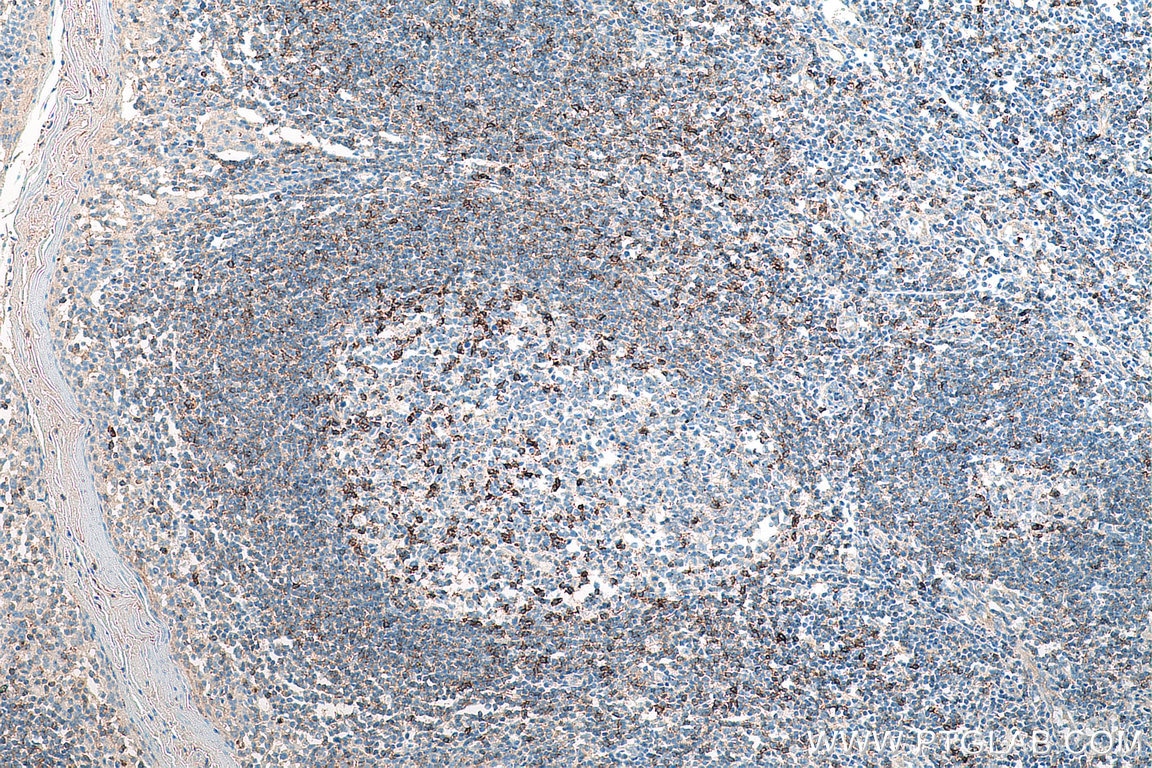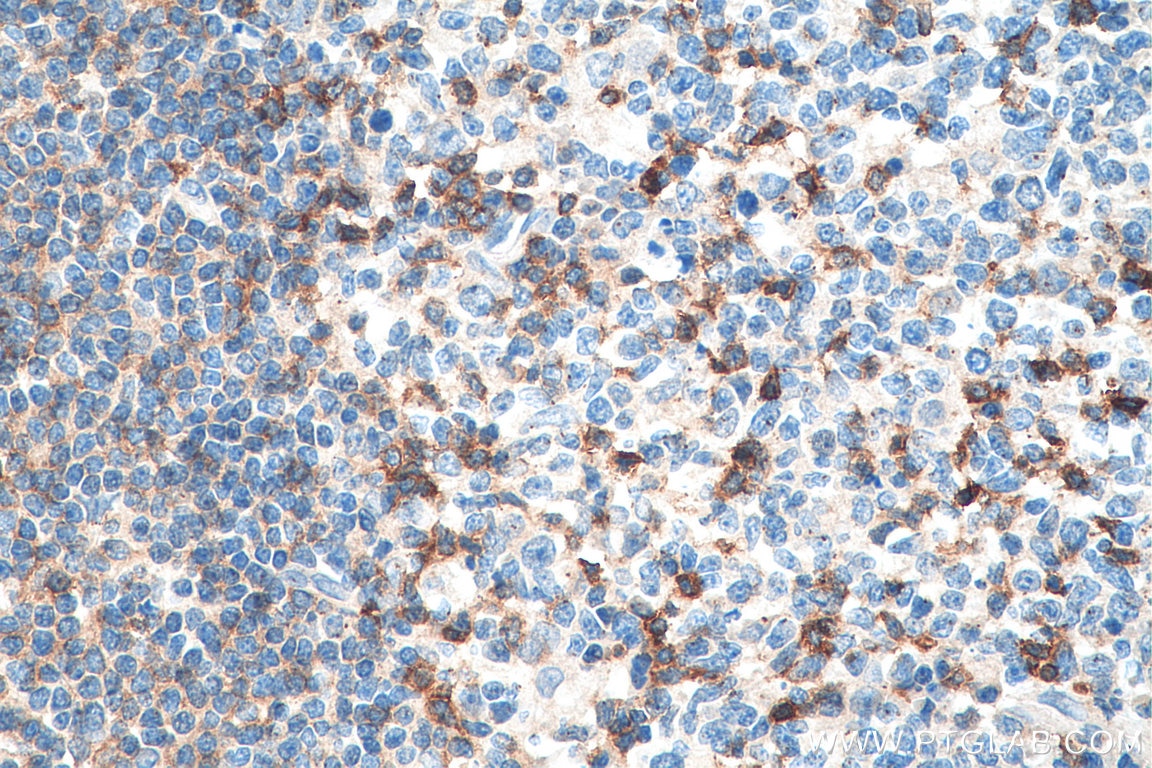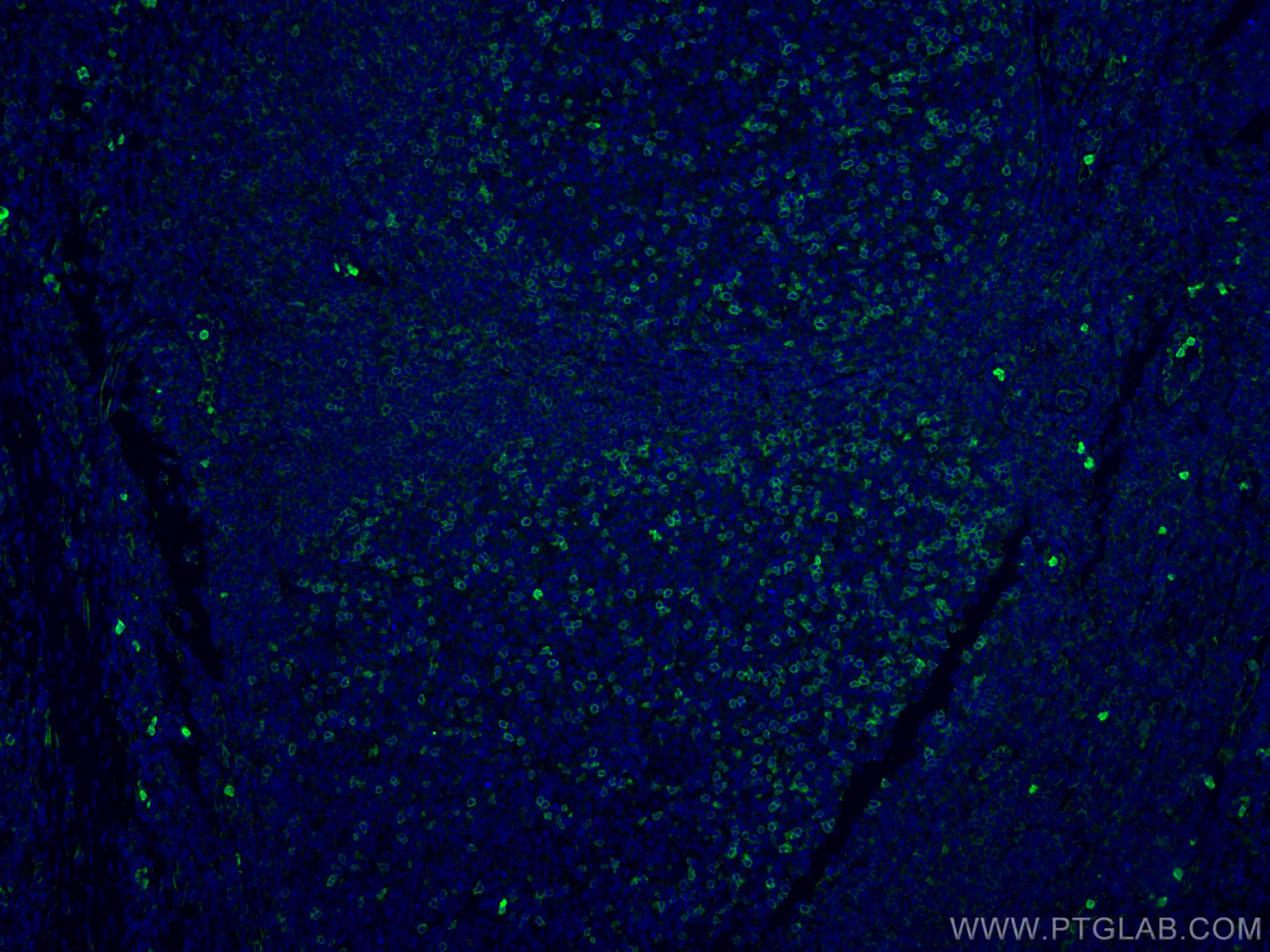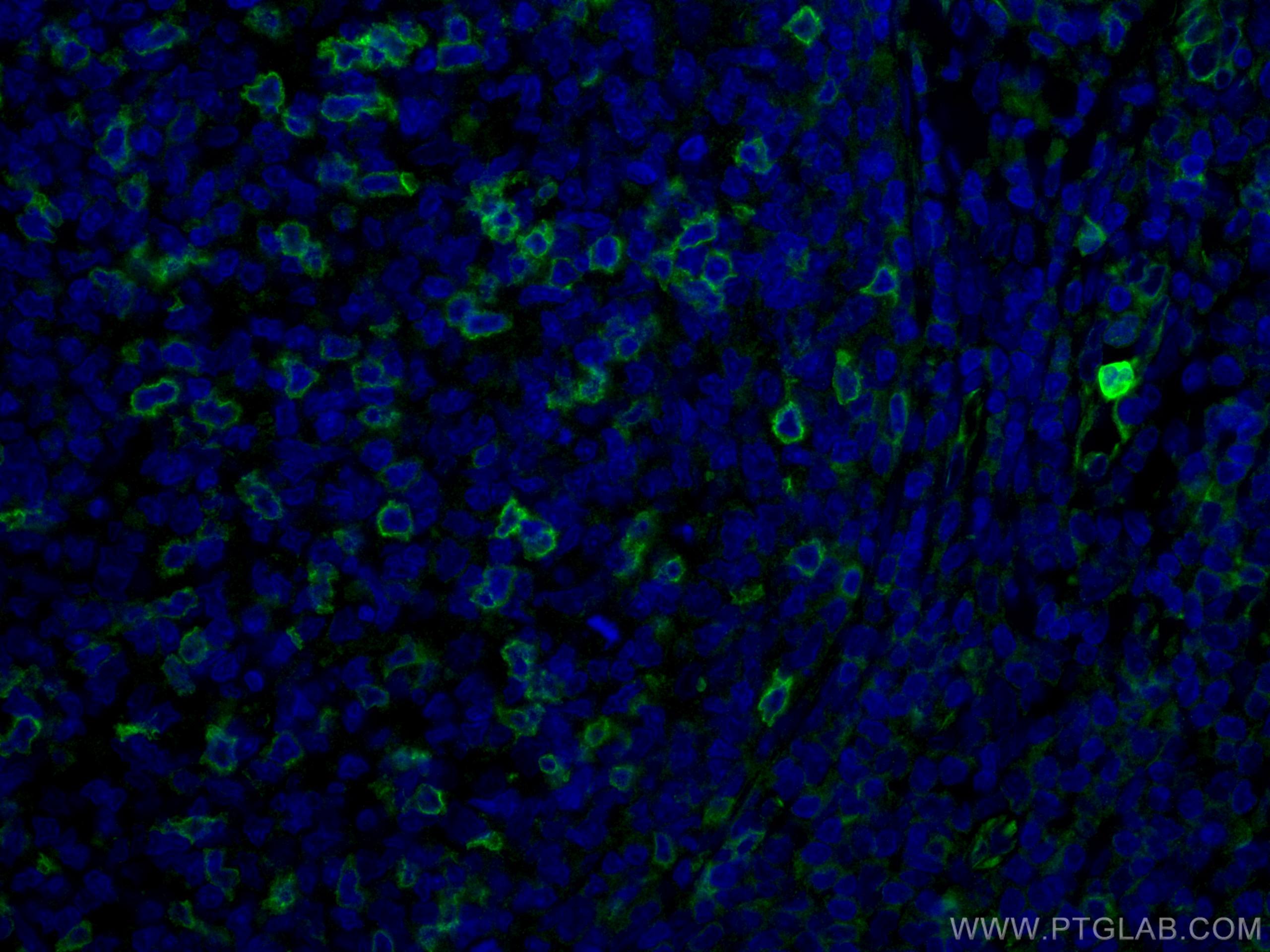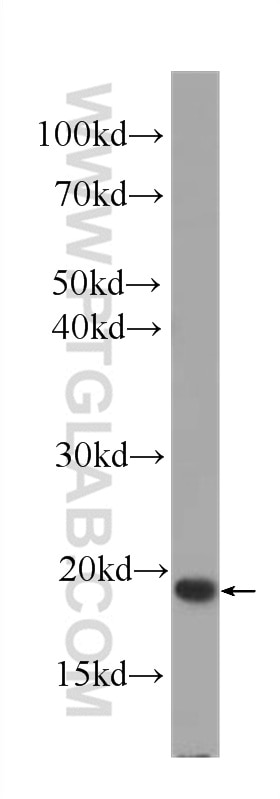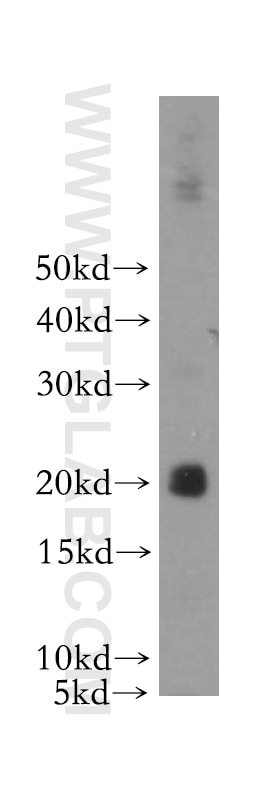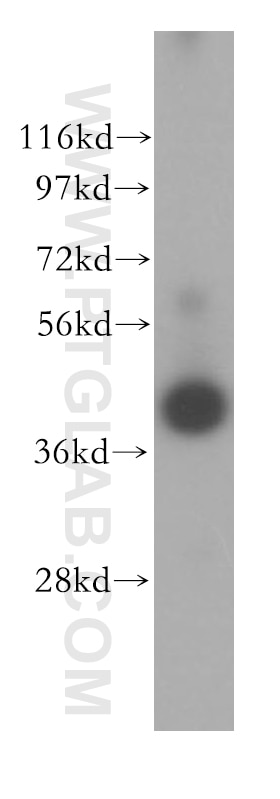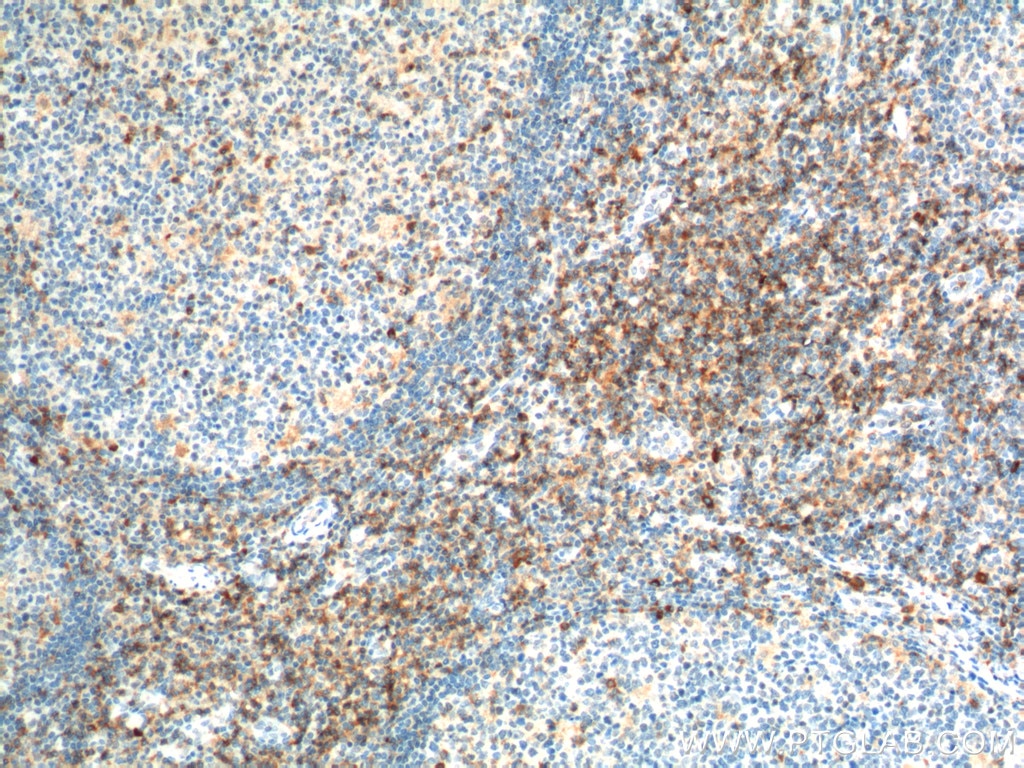Anticorps Polyclonal de lapin anti-CD69
CD69 Polyclonal Antibody for WB, IHC, IF-P, ELISA
Hôte / Isotype
Lapin / IgG
Réactivité testée
Humain et plus (1)
Applications
WB, IHC, IF-P, ELISA
Conjugaison
Non conjugué
N° de cat : 10803-1-AP
Synonymes
Galerie de données de validation
Applications testées
| Résultats positifs en WB | plaquettes de sang périphérique humain, |
| Résultats positifs en IHC | tissu d'amygdalite humain, il est suggéré de démasquer l'antigène avec un tampon de TE buffer pH 9.0; (*) À défaut, 'le démasquage de l'antigène peut être 'effectué avec un tampon citrate pH 6,0. |
| Résultats positifs en IF-P | tissu d'amygdalite humain, |
Dilution recommandée
| Application | Dilution |
|---|---|
| Western Blot (WB) | WB : 1:500-1:3000 |
| Immunohistochimie (IHC) | IHC : 1:2000-1:8000 |
| Immunofluorescence (IF)-P | IF-P : 1:50-1:500 |
| It is recommended that this reagent should be titrated in each testing system to obtain optimal results. | |
| Sample-dependent, check data in validation data gallery | |
Applications publiées
| WB | See 1 publications below |
| IHC | See 2 publications below |
| IF | See 4 publications below |
| FC | See 1 publications below |
Informations sur le produit
10803-1-AP cible CD69 dans les applications de WB, IHC, IF-P, ELISA et montre une réactivité avec des échantillons Humain
| Réactivité | Humain |
| Réactivité citée | Humain, souris |
| Hôte / Isotype | Lapin / IgG |
| Clonalité | Polyclonal |
| Type | Anticorps |
| Immunogène | CD69 Protéine recombinante Ag1094 |
| Nom complet | CD69 molecule |
| Masse moléculaire calculée | 23 kDa |
| Poids moléculaire observé | 28 kDa, 32 kDa |
| Numéro d’acquisition GenBank | BC007037 |
| Symbole du gène | CD69 |
| Identification du gène (NCBI) | 969 |
| Conjugaison | Non conjugué |
| Forme | Liquide |
| Méthode de purification | Purification par affinité contre l'antigène |
| Tampon de stockage | PBS avec azoture de sodium à 0,02 % et glycérol à 50 % pH 7,3 |
| Conditions de stockage | Stocker à -20°C. Stable pendant un an après l'expédition. L'aliquotage n'est pas nécessaire pour le stockage à -20oC Les 20ul contiennent 0,1% de BSA. |
Informations générales
CD69, also known as activation inducer molecule (AIM) or early activation antigen (EA1), is a cell surface glycoprotein expressed shortly after activation on T lymphocytes and other cells of haematopoietic origin, including natural killer cells. It is a disulfide-linked homodimer composed of two chains belonging to the type II integral protein with a C-type lectin domain. CD69 is involved in lymphocyte proliferation and functions as a signal-transmitting receptor in lymphocytes, natural killer cells, and platelets.
Protocole
| Product Specific Protocols | |
|---|---|
| WB protocol for CD69 antibody 10803-1-AP | Download protocol |
| IHC protocol for CD69 antibody 10803-1-AP | Download protocol |
| IF protocol for CD69 antibody 10803-1-AP | Download protocol |
| Standard Protocols | |
|---|---|
| Click here to view our Standard Protocols |
Publications
| Species | Application | Title |
|---|---|---|
Cancer Commun (Lond) Targeting autophagy overcomes cancer-intrinsic resistance to CAR-T immunotherapy in B-cell malignancies | ||
iScience Highly multiplexed spatial analysis identifies tissue-resident memory T cells as drivers of ulcerative and immune checkpoint inhibitor colitis | ||
Expert Rev Clin Immunol Juxtaposition of IL-1β and IFN-γ expression and apoptosis of keratinocytes in adult-onset Still's disease. | ||
Cell Rep Longitudinal analyses reveal distinct immune response landscapes in lung and intestinal tissues from SARS-CoV-2-infected rhesus macaques. | ||
Oncoimmunology Development and validation of an interferon signature predicting prognosis and treatment response for glioblastoma. | ||
J Nanobiotechnology Optogenetic engineered umbilical cord MSC-derived exosomes for remodeling of the immune microenvironment in diabetic wounds and the promotion of tissue repair |
